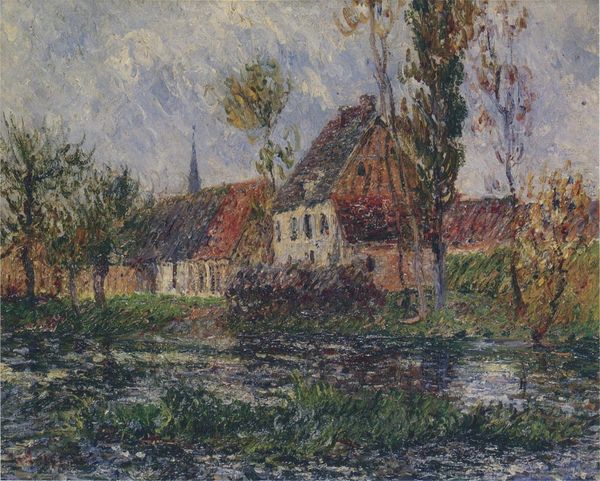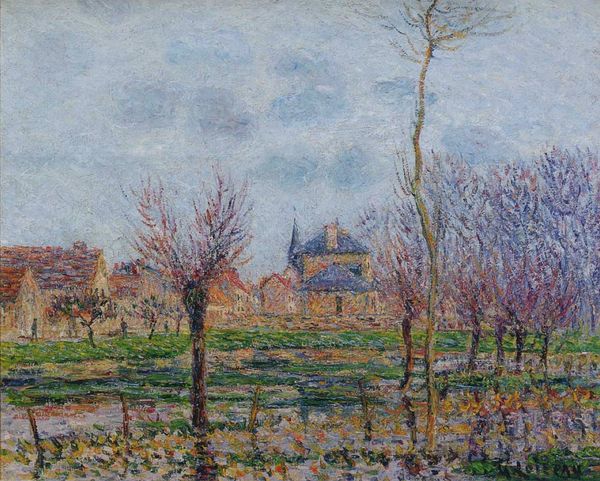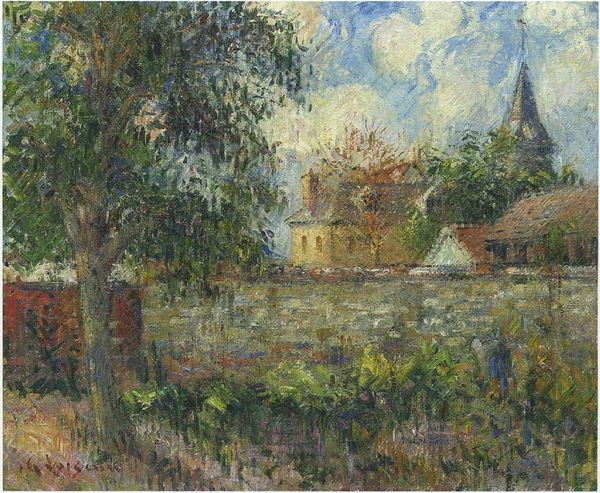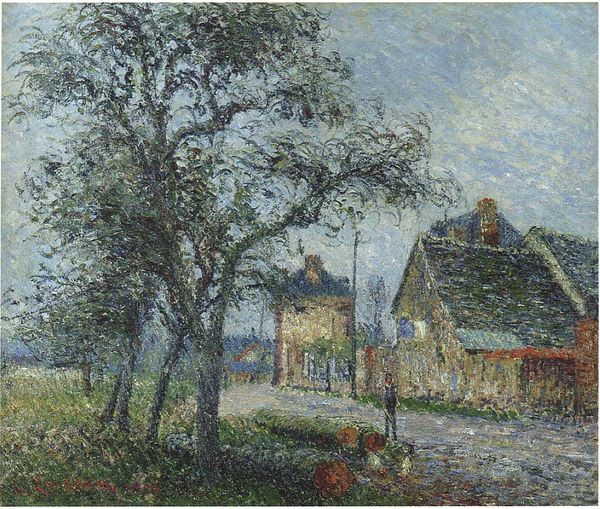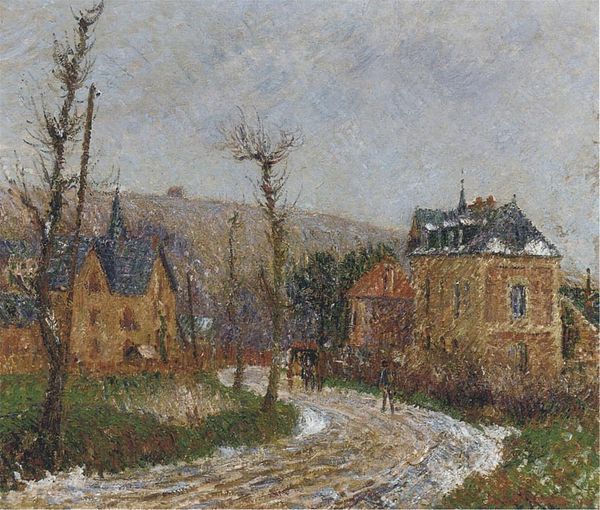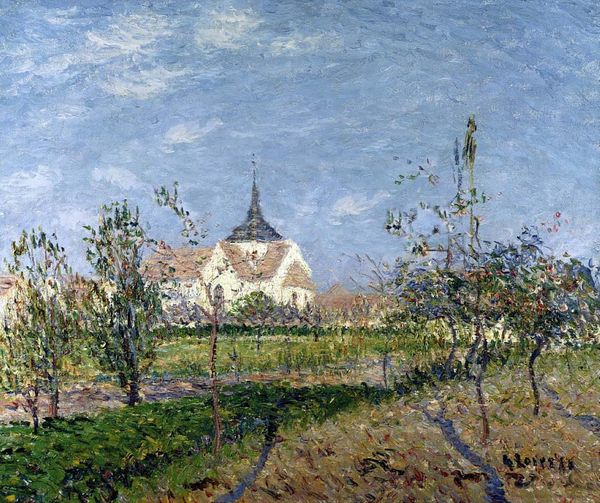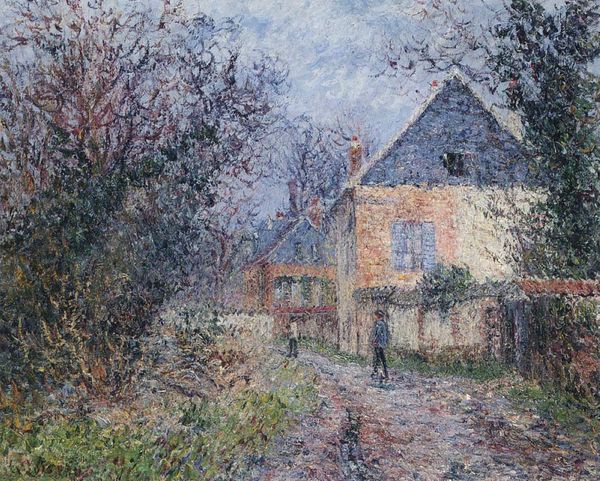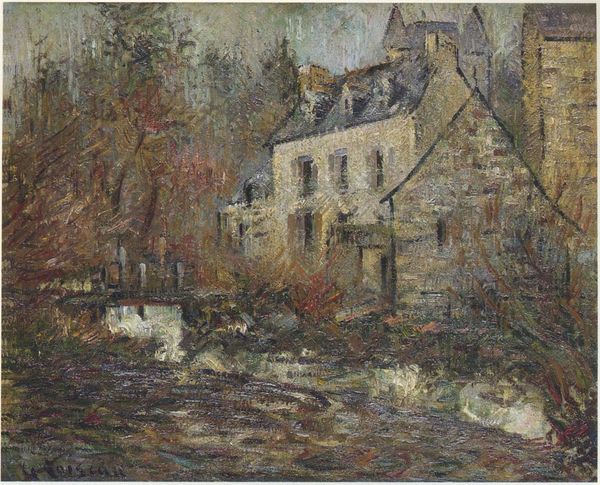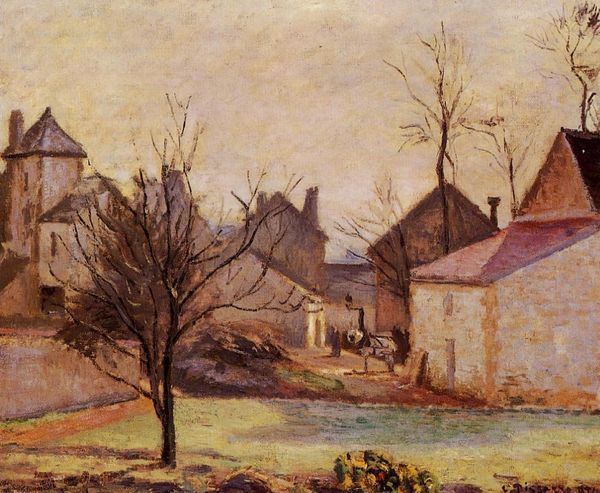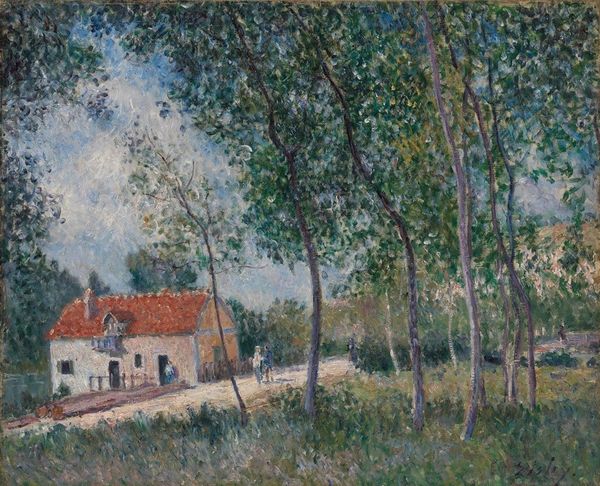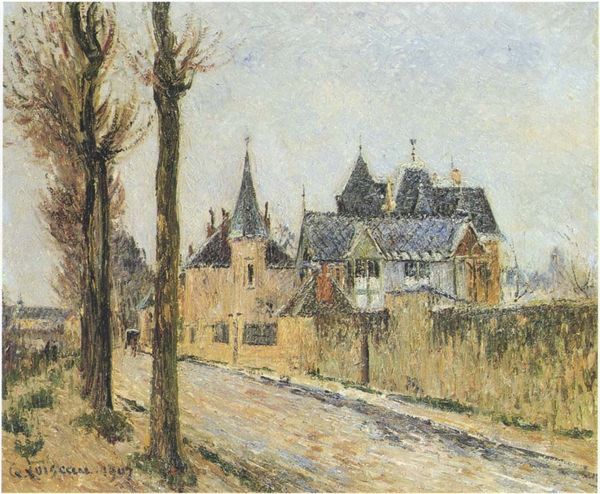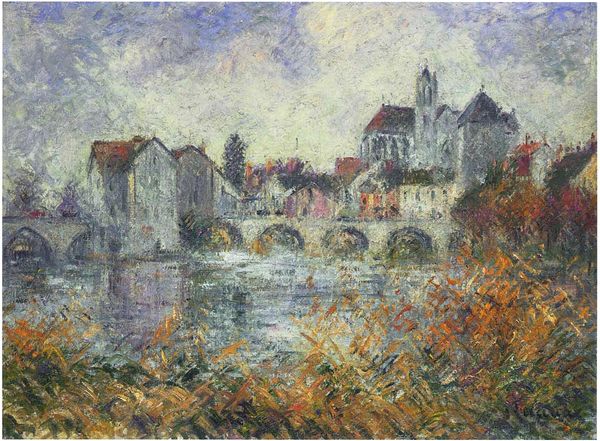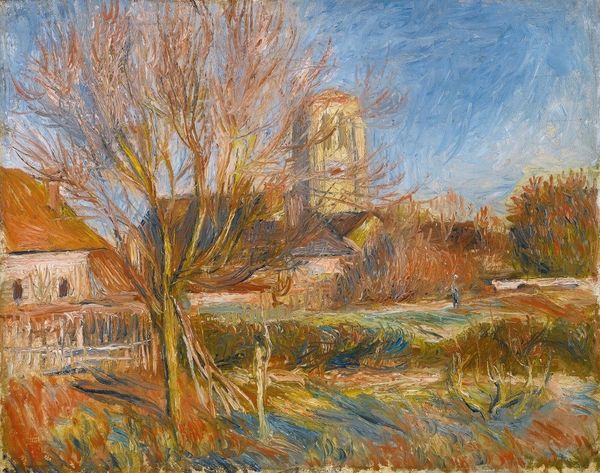
painting, plein-air, oil-paint, impasto
#
tree
#
painting
#
impressionism
#
impressionist painting style
#
plein-air
#
oil-paint
#
neo-impressionism
#
landscape
#
house
#
impressionist landscape
#
impasto
#
cityscape
#
building
Copyright: Public domain
Curator: This piece, “House of Monsieur de Irvy near Vaudreuil" by Gustave Loiseau, is stunning in its textural density. The artist worked with oil paint and applied it "en plein air," which I find remarkable considering its style leans toward Neo-Impressionism. The palette feels so muted, almost monochromatic. What strikes you about it? Editor: Well, the impasto is what really grabs my attention. I can almost feel the thickness of the paint. I'm curious though – what does the choice of these materials, the oil paint and plein air, tell us about Loiseau’s intentions, especially considering he's working in a Neo-Impressionist style? Curator: Excellent question! The materiality of oil paint and the act of painting *en plein air* were intrinsically linked to changing social and economic structures. Artists sought a new relationship with their subjects and the labor involved. By directly engaging with the landscape, Loiseau foregrounds the physical act of painting. The very texture speaks to his interaction with the environment. Think about it: mass-produced paint became increasingly available. This access enabled artists to create these kinds of textured works in an embodied manner. It's a break from academic painting towards something more immediate and grounded in lived experience. Editor: So, it's almost a democratization of art making through materials and the experience of labor? By choosing "en plein air," it's about stepping outside the established system. Curator: Precisely. This relates directly to a rise in industrial production – both of paint and of images. It calls into question not just what is depicted but how art is created, challenging hierarchies and offering new ways to consume art outside the salon. Editor: It's like he's celebrating the *how* as much as the *what*. I’m viewing it from a new angle now. Curator: It's all intertwined, isn't it? The means of production, the location of production, the materiality of the final object...it’s about considering art as both a process and a product embedded within its social moment. Editor: Thank you. It’s so interesting to see how materials and technique were part of a larger cultural shift in what art could be and do.
Comments
No comments
Be the first to comment and join the conversation on the ultimate creative platform.
